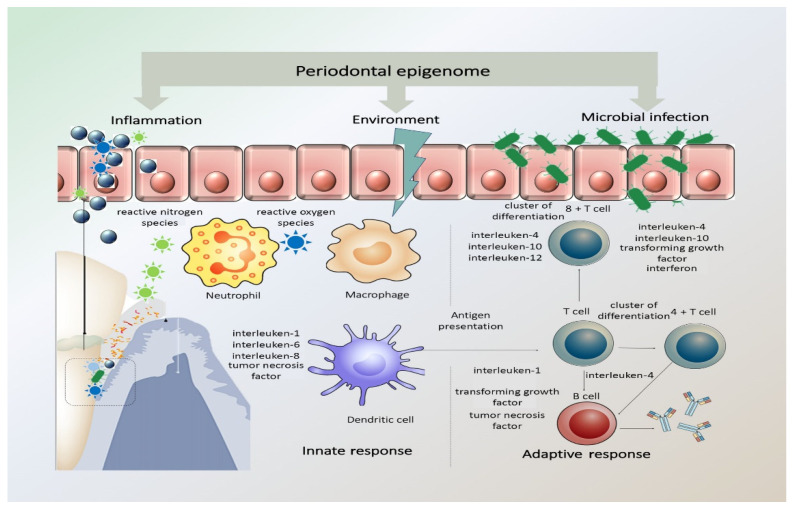Figure 1.
Periodontal epigenome in response to microbial infection, environmental stimuli, and inflammation. The periodontal inflammatory response has both protective and destructive elements that pathogens may alter. The innate inflammatory response relies on the recognition of microbial pathogens and is mediated by neutrophils, tissue macrophages, subepithelial dendritic cells, natural killer cells, and monocytes. The activated immune cells produce and release reactive oxygen species (ROS) and reactive nitrogen species (RNS) in response to infection. This acute inflammatory response turns to a chronic stage when the antigen-presenting cells become involved and present the antigens/microorganisms to immunocompetent cells expanding the antibody-secreting plasma cell population. (Adapted with permission from Wiley Publisher).

